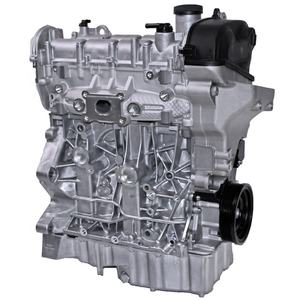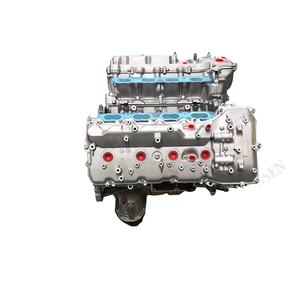Locating the very best Offers on Opel Corsa Engine Components
Locating the very best Offers on Opel Corsa Engine Components
Blog Article
Checking Out the Inner Operation of a Compact Lorry's Engine System
As chauffeurs, we often take for granted the detailed processes that take place within the confines of our vehicle's engine system. In this expedition of a portable automobile's engine system, we will untangle the inner operations of this mechanical symphony, losing light on the mysteries that drive us onward on our daily trips.
Combustion Process Overview
The combustion process in a compact vehicle's engine system is an essential system that successfully converts gas right into energy to power the lorry. This process happens within the burning chamber of the engine, where fuel and air mix, stir up, and generate controlled surges. The burning process includes four main phases: consumption, exhaust, power, and compression.
During the consumption stage, the piston relocates downward, drawing in a combination of air and gas into the burning chamber. The next phase, compression, involves the piston relocating up, pressing the air-fuel mix to increase its effectiveness. Subsequently, in the power phase, the ignition system stirs up the pressed blend, resulting in a quick expansion of gases that requires the piston pull back. This down activity generates the power required to drive the vehicle. Lastly, in the exhaust phase, the burned gases are gotten rid of from the burning chamber through the exhaust shutoff, preparing the chamber for the following cycle. This cyclic combustion procedure is fundamental to the procedure of a portable vehicle's engine system, making certain efficient power conversion for propulsion.
Piston and Cyndrical Tube Communication

The piston's exact fit within the cylinder is important for maintaining optimal compression and preventing energy loss throughout combustion. Tight clearances in between the piston and cylinder walls make sure efficient sealing, enabling the piston to move smoothly without allowing gases to leakage past. Correct lubrication is likewise important to reduce rubbing and use between these components, boosting durability and performance.
In addition, the style and products utilized in making the piston and cylinder effect engine effectiveness and sturdiness. Modern engines frequently employ light-weight yet resilient products like aluminum alloys for pistons and cyndrical tube liners to lower inertia and improve thermal efficiency. Generally, the harmonious interaction in between the piston and cylinder is essential to the engine's functionality and general efficiency.
Fuel Injection System Capability
Fuel injection systems in portable vehicle engines play an essential duty in specifically providing gas to the combustion chamber for effective and regulated ignition. The navigate to this website fuel shot system operates by injecting fuel into the burning chamber at the optimum moment throughout the engine's procedure (opel corsa engine). This precise timing guarantees that the fuel mixes uniformly with the air for correct burning, resulting in enhanced gas performance and reduced emissions
There are mostly 2 sorts of fuel shot systems used in small lorry engines: port gas shot (PFI) and straight fuel shot (DFI) PFI systems inject fuel into the consumption port before the consumption shutoff, while DFI systems infuse fuel straight into the burning chamber. Both systems have their benefits, with DFI offering far better gas atomization and PFI supplying a more affordable option.
Understanding Engine Cooling Devices
Efficient operation of a compact car's engine depends heavily on the effectiveness of its cooling mechanisms. Engine cooling is important to avoid overheating, which can result in severe damage and decreased efficiency. The air conditioning system in a small car usually contains several components interacting to regulate the engine temperature level. One critical component is the radiator, which uses coolant to take in warm from the engine. As the hot coolant moves with the radiator, it releases warmth into the air, cooling down prior to going back to the engine. The water pump circulates the coolant via the engine and radiator, ensuring a regular flow to manage temperature. Additionally, the thermostat helps manage the coolant flow to preserve optimal engine temperature level. Some cars additionally have cooling fans that turn on when additional air conditioning is needed, such as throughout heavy website traffic or hot weather condition. Comprehending these engine air conditioning devices is important for keeping the performance and durability of a portable automobile's engine system.

Exhaust System Parts Explained
The optimum performance of a compact car's engine air conditioning devices depends on a complementary system referred to as the exhaust system, which comprises different necessary parts for guaranteeing effective discharges and engine performance. The exhaust system consists of parts such as the exhaust manifold, catalytic converter, muffler, and tailpipe. The exhaust manifold gathers exhaust gases from the engine's cylinders and routes them to the catalytic converter. The catalytic converter then converts dangerous contaminants in the exhaust into less hazardous discharges before releasing them through the muffler and tailpipe.
One vital element view it now of the exhaust system is the oxygen sensor, which checks the oxygen degrees in the exhaust gases to assist control fuel usage and make sure ideal engine efficiency. opel corsa engine. Furthermore, the resonator might exist in some exhaust systems to reduce sound levels. On the whole, the exhaust system plays an essential duty in preserving engine efficiency, lowering damaging emissions, and making certain a quieter driving experience for compact lorry proprietors

Conclusion
To conclude, the compact automobile's engine system is a complex combination of parts that work with each other to promote the burning process, convert gas into energy, and expel waste gases. Recognizing the internal workings of the engine system, including the piston and cylinder communication, gas injection system, engine air conditioning see post devices, and exhaust system components, is critical for maintaining ideal efficiency and performance of the car.
The burning procedure in a compact car's engine system is an essential mechanism that efficiently converts fuel right into power to power the vehicle.Fuel injection systems in small automobile engines play an essential role in precisely providing fuel to the combustion chamber for regulated and effective ignition.There are largely 2 kinds of gas injection systems utilized in compact car engines: port fuel injection (PFI) and direct gas shot (DFI) Recognizing these engine air conditioning devices is essential for keeping the efficiency and long life of a portable automobile's engine system.
The ideal performance of a portable automobile's engine air conditioning systems depends on a complementary system known as the exhaust system, which comprises numerous crucial parts for ensuring efficient exhausts and engine efficiency.
Report this page